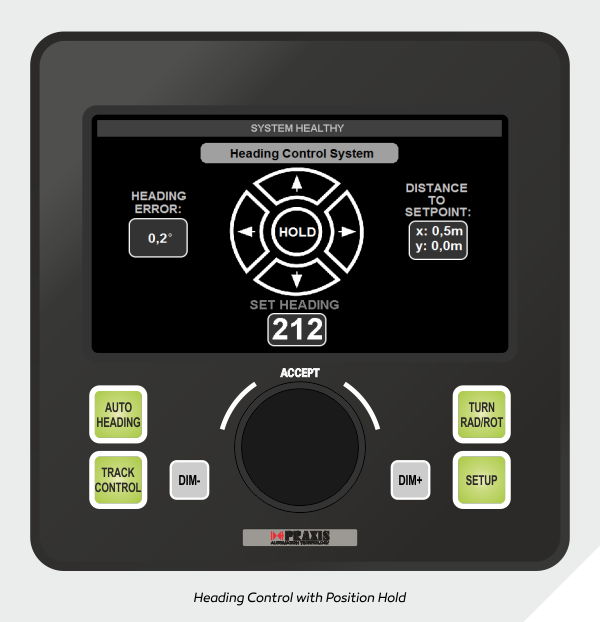XPM-002 Vanguard will operate with a short-handed crew. Minimum one and average two crew. Safely docking and maneuvering a 78-foot motor yacht under such conditions presents considerable challenges irrespective of experience level. We also have a need to maintain the vessel on station in environmentally sensitive areas with restricted anchoring and when at anchor to keep bow on to the swell (if we can't manage this with a spring line on the anchor chain).
Docking Assistance: The Target
Save my marriage when docking - aka "no shouting at my Missus"
Save my insurance premiums - aka "no bangs, scrapes or salvage"
Save my arms, legs and fingers - aka "peace and tranquility rein"
Our machinery and control systems specification targeted assisting the operation with an absolute minimum crew. Early in the design process we looked at systems such as Dockmate, Assisted Docking from Volvo Penta or Dockcommand from Cummins. Great systems in themselves but not developed to optimize the drive configuration we had installed. They are typically for planing boats with bow and stern thrusters or azimuthing Pod/Z Drives.
Docking Assistance: Dynamic Positioning Theory
Docking Assistance Dynamic Positioning systems account for external forces acting upon the vessel, such as wind, waves and current. One common feature of a Dynamic Positioning system is a station-keeping function. This is the vessel’s capability to react to external loading to maintain a certain position and heading [1]. This capability is affected by the equipment configuration the number of propellers, thrusters and linked or independent rudders. In the example below, Vanguard has the same configuration as example C3 [2]. Bow thruster, twin propellers and independently operated rudders.
The Dynamic Positioning system capability is represented as a polar diagram or DP Capability plot [2]. This is a plot of the ability of the vessel to maintain station as the opposing forces are swing 360 Deg around the hull. It plots the limiting value at all angles. In the example given it is evident that the limiting condition is on the beam where external forces have the greatest effect on station keeping.
The Hull Machinery
XPM78-002 uses a diesel-electric hybrid drive providing high and controllable thrust from two propellers with rapid reversing. Electric drive provides these propellers with high torque at low shaft speed. Additionally, the vessel carries a 12kW 250mm Sidepower bow thruster with proportional control. Two independent and oversize rudders provide a rapid 80-degree swing. Motors, thruster and rudders are linked to the DP Control system.
Docking Assistance for a Large Explorer Yacht: The Solution
A Mega-Guard Heading Control System from Praxis Automation controls the setup. This is a traditional heading control system (autopilot) linked with software from a Dynamic Positioning system also provided by Praxis [DP0]. Such systems [DP1, 2 or 3] are used in the oil exploration industry, the difference being a reduced redundancy allowance and isolation requirements as our Yacht is less than 24m LOA. The DP software allows control thrusters and engines as well independent rudder control.
The system is connected via NMEA 0183 interface to Heading, Wind, and GyroCompass sensors. It communicated with thruster, motor and rudder controllers via dual redundant Ethernet backbone. Operation is by touch panel and joystick control located at the helm, flybridge, and aft docking stations. The vessel will keep a consistent heading OR remain on station OR held hard against the dock in winds speeds below approximately 20kn and tidal streams of 3kn(on the beam).
By installing an advanced hybrid electric drive, bow thruster, and twin independent rudders, all linked via the Praxis Mega-Guard Heading Control system, the XPM78-002 can be maneuvered and docked in safety by a single crew member. Or at least that is what the modeling tells us and the systems are already used extensively in commercial applications.
Naval Yachts believe this is a first in extending the capabilities of much larger commercial vessels to a yacht of this size and considerable capability.
Dinner Dinc - Naval Yachts
Chris Leigh-Jones
References











